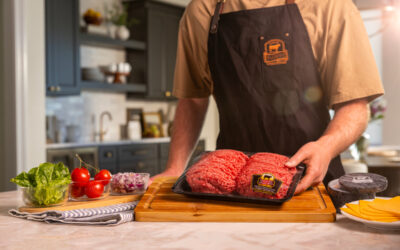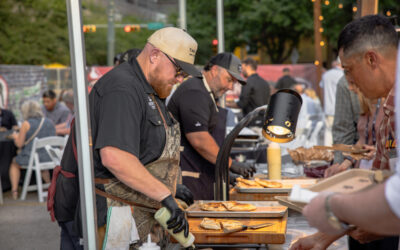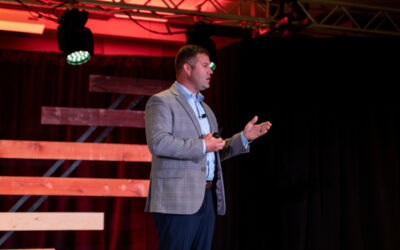
Angus cattle performance showcased
by Laura Nelson
Winners of the 2013 Carcass Data Project (CDP) didn’t leave a lot of room for outliers.
The top three contestants’ data in the Kansas Angus Association (KAA) annual contest were of exceptional quality and within 3 percentage points, at 89%, 88% and 86% Prime and Certified Angus Beef ® (CAB®) brand acceptance. Final standings were based on the top three calves from any owner, taking gain and CAB acceptance into account.
With eight of John Wendling’s nine steers qualifying for the CAB brand, he edged out the competition and took home top honors with a $500 cash prize.
The cattle were fed at McPherson County Feeders, a CAB partner yard near Marquette, Kan., which has hosted the CDP the past three years.
“All the cattle in the contest had good numbers,” Wendling said. “I was just lucky to have the right number with the right percentage to win.”
But the real prize, he said, was the data that came back after the contest. He usually finishes the cattle at the Halstead, Kan., ranch he operates with his father and grandfather.
“I look at the data and still see places to improve on,” Wendling said. “We just want to use that data to keep improving and see how we can do better.”
All the animals entered the yard in December 2012 with a minimum of 5 head per contestant. In the six months at McPherson, Wendling’s cattle gained an average 3.84 pounds per day (ADG).
“We’ve always had quite a bit of growth in those cattle, and we recently have been trying to add marbling and ribeye to them, working to put more emphasis on some of the carcass traits,” he said.

Both Wendling and second-place finisher Molitor Angus were rookies to the contest this year, although neither are strangers to the Angus business or tough competition.
Mike Molitor knows the whole range of the beef supply chain, from conception to center of the plate at his CAB-licensed restaurant, The Lumberyard, in hometown Zenda, Kan. His CDP pen of 25 calves that made 88% CAB and Prime came from the bottom end that didn’t make his registered bull sale..
“We base all our selection on a competition,” he said. “These calves got steered not because they didn’t have the genetic potential, but because they had tough competition at home.”
They were likely later-born calves.
“But then you put them in the feedlot, and they grow. They express that potential,” Molitor said. Most of them were AI-sired calves with a known genetic history, he added, and the data feedback from the contest will continue to help him and his bull customers build and prove numbers in the American Angus Association database. He earned a $300 cash prize.
The detailed management at McPherson County Feeders helps, too, he said. The cattle were shipped in three groups based on ultrasound data.
“That’s the big advantage of the McPherson deal,” Molitor said, “Where they ultrasound and designate market times for those cattle. They’re selling them at the optimum harvest date – you know, one week is all it takes to overshoot a heavy and get a discount. Here, they have it all figured out.”
Todd Klausmeyer returned to the contest, this time with his own pen of seven steers that returned 86% CAB for the third-place ranking. In the 2012 contest, he grouped three of his calves in with those of his father (Thomas) to win the contest.

This year, his brother Jeff took home top honors with the best ADG at 3.85 pounds per day.
“We get to compete against each other and get bragging rights,” Klausmeyer said with a laugh. “But it’s also really important to us to get some good, concrete end-product data back. This is a great way for us to collect that data on our animals and help us improve our herds.”
They’ve been selecting for a combination of low birth weight, solid gains and carcass performance for years, slowly making improvements in each category.
“Historically, if you’re buying Angus genetics, it’s because you want to use them on your heifers and secondly because of the beef, to keep the marbling high,” Klausmeyer said. “But now we have proven bulls with good growth numbers, too.”
Their calves were set back by intense drought last summer, but that didn’t stop them from performing in the yard and on the rail.
“They went on feed lighter than normal, so they had to have some good compensatory gains to still do so well on feed,” he said.
There were 80 head entered by eight participants in all this year, including those from Hazelton Angus, McPherson, Kan.; (Jeff) Klausmeyer K3 Angus, (Todd) Klausmeyer K3 Angus, (Thomas) Klausmeyer K3 Angus, Conway Springs, Kan.; Wendling Farm, Halstead, Kan.; Molitor Angus Ranch, Zenda, Kan.; Hobbs Ranch, Panokee, Kan.; and Nemaha Valley Angus, Bern, Kan.
Overall, 73% of the animals earned the CAB brand, more than tripling the national acceptance rate, and graded 90% Choice or higher with 7.6% Prime.
You may also like
Success, Despite Challenges
Today’s market is complex and competitive. The collective effort of stakeholders across the supply chain positions Certified Angus Beef to meet the record demand for premium beef moving forward. Signals across the beef industry are clear and Angus farmers and ranchers seeking high-quality genetics that deliver premium beef are producing a product in high demand.
Keep the Supply Coming
A record-high 800 registrants from 17 countries gathered in Austin, Texas, to learn more about CAB, become inspired by the culinary work of chefs and pitmasters, and celebrate sales and production success. But at the forefront: supply and demand, a reflection of the chaotic past year, and preparing for what’s ahead.
Consumer Demand, Power of Quality
Demand for high-quality beef persists. But with that demand comes challenges. From tight cattle supplies to higher costs and increasing pressure on retailers to deliver a consistent eating experience, the pressure is on. David O’Diam, CAB VP of retail, addressed the current retail beef environment, highlighting both opportunities and challenges in today’s marketplace.



